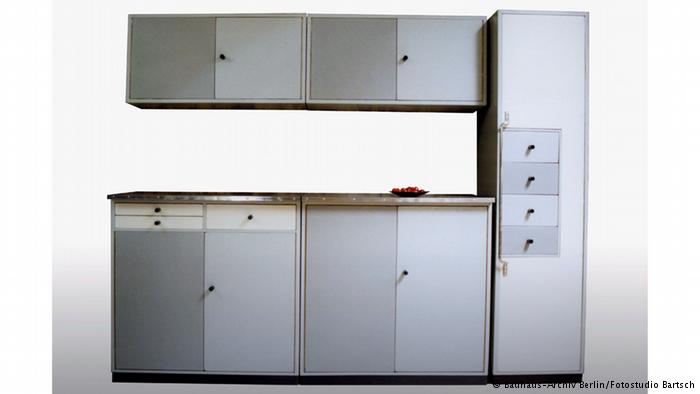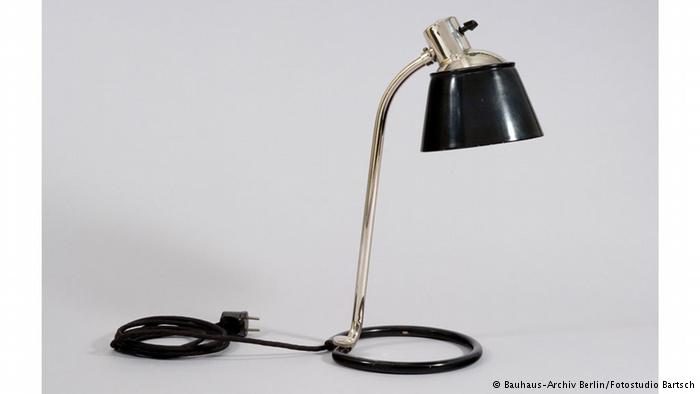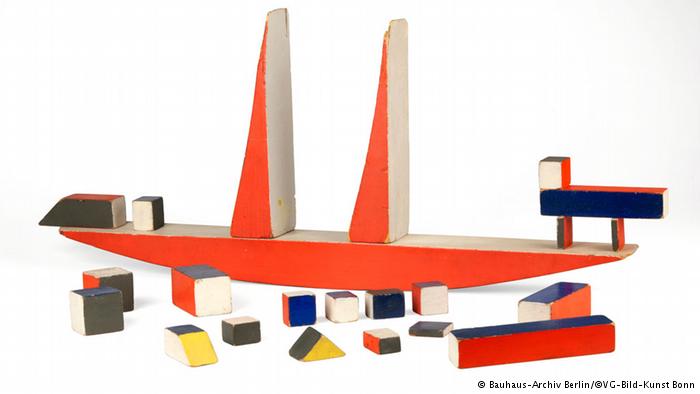The Bauhaus Archive in Berlin, home to the world’s largest collection related to the history of this architectural school, celebrated its centenary in 2019. To mark this milestone, the archive presented 100 new objects. Modern Bauhaus-style furniture for homes and offices has evolved with new features while preserving the core principles of Bauhaus. Let’s travel back in time to explore what Bauhaus design was like in the 1920s and 1930s and why it remains relevant today.
Creating True Masterpieces of Functional Design

"True design begins with understanding human needs. Everything else is mere decoration." – Walter Gropius, founder of the Bauhaus school
"Practicality, functionality, simplicity" – these words could be considered the unofficial motto of everything created at the Bauhaus architectural school. The archive showcases household items crafted under this philosophy: lamps, rugs, and Bauhaus-style furniture. The 1929 kitchen designed by Marcel Breuer is a prime example of how, in an era when more women pursued professional development, Bauhaus interior design was created to save time on household chores.
When the Light Went Out: Lamps as an Embodiment of Bauhaus Style

The iconic Wagenfeld lamp was the first lamp designed within the Bauhaus style. The Bormann lamp, released in 1932, was the last. It was designed and crafted in the Bauhaus workshop in Dessau. Its features include a cable neatly concealed within a metal tube that serves as the base, and an adjustable shade to control light intensity—a vivid example of the functional design characteristic of the Bauhaus school.
Geometry in Toys: Minimalism for the Youngest

From Bauhaus architecture, we move to toys. In 1923, Alma Buscher created a toy ship using geometric forms in its design, originally developed by Friedrich Fröbel in the 19th century. She worked on decorating a children’s room in the “Am Horn” house in Weimar, a striking example of Bauhaus style. The Bauhaus Archive in Berlin displays the original large toy from this house—an example of how Bauhaus principles were applied even in the creation of children’s toys.
The Art of Architecture: Modernism in Its Purest Form

"Architecture is the will of an era translated into space. Living. Changing. New." – Ludwig Mies van der Rohe, director of the Bauhaus school from 1930 to 1933
“The ultimate goal of the creative process is construction” – so proclaimed the manifesto of the Bauhaus architectural school. In Weimar, projects by architects like Farkas Molnár remained unrealized. But when the Bauhaus school moved to Dessau in 1926, it established its own architecture department. The Bauhaus archives provided the Bauhaus exhibition with numerous drawings and sketches related to modernism in architecture.
Rethinking the Social Role of Bauhaus Design
Modern researchers increasingly view the Bauhaus school not merely as an institution of architecture and applied arts but as a social project aimed at transforming the world through Bauhaus design. A new perspective highlights how Bauhaus practitioners sought to influence people’s lifestyles by creating accessible, functional, and universal solutions—from cutlery to housing.
"Bauhaus is not a style but a way of thinking. It is a philosophy of shaping the surrounding space that remains relevant today." — Walter Gropius, founder of the Bauhaus school
This idea is more relevant than ever today: minimalism in interiors, sustainable consumption, and eco-design all trace their roots to the Bauhaus philosophy of practicality and aesthetics. Modern concepts like biophilic design build on Bauhaus ideas, creating spaces that are not only functional but also promote psychological well-being.
Women of Bauhaus: Forgotten and Rediscovered
For a long time, the Bauhaus school was perceived as a male-dominated space associated with Gropius, Mies van der Rohe, and others. However, historians are now rediscovering the contributions of women designers and artists to the Bauhaus legacy.
| Name | Field | Contribution to Bauhaus Style |
|---|---|---|
| Anni Albers | Textile Design | Pioneer of textile design whose works influenced industrial fabric production |
| Gunta Stölzl | Weaving Workshop | Led the weaving workshop, shaping aesthetic and technical standards of textile design |
| Marianne Brandt | Product Design | Innovator in product design (her teapots and lamps became icons of modernism) |
| Alma Buscher | Toy Design | Created revolutionary toys applying functional design principles for children |
The table above illustrates the diverse contributions of women to the development of Bauhaus principles. Today, their names are gaining prominence, and museums are actively including their works in permanent collections, offering a fresh perspective on Bauhaus history.
Applying Bauhaus Style in Modern Interiors
Applying Bauhaus school principles in modern interior design creates functional, aesthetic, and comfortable spaces. Here’s how to incorporate Bauhaus style into interiors:
- Minimalism and functionality – every item should serve a purpose
- Geometric shapes – straight lines, circles, triangles in furniture and decor
- Primary colors – red, blue, yellow combined with neutral tones
- Open space – free layouts with ample light
- Industrial materials – glass, metal, concrete in interiors
These principles easily adapt to modern needs while retaining the unique Bauhaus aesthetic. Contemporary designers often combine Bauhaus principles with new approaches, creating styles like organic modern style, which merges Bauhaus functionality with natural materials. These allow for the creation of interiors that remain timeless regardless of fashion trends.
Success Story: How Bauhaus Style Transformed a Kyiv Apartment
The Kovalchuk family from Kyiv struggled to choose a style for their new 85-square-meter apartment. They wanted space, light, and functionality without unnecessary details. After consulting with designers, they decided to apply Bauhaus principles to the interior.
“We doubted that the classic Bauhaus style could be cozy, but the result exceeded all expectations,” says Iryna Kovalchuk. “The open layout, functional Bauhaus-style furniture, geometric shapes, and accents with primary colors created not only an aesthetic but also an incredibly practical space. Every centimeter is used purposefully, yet the apartment feels spacious and filled with light.”
Conclusion: Bauhaus Legacy in the Modern World
Bauhaus is not just a chapter in design history but a living organism whose roots extend into the present and future. New research, feminist, and postcolonial perspectives reveal a multifaceted, complex, and inspiring picture of the Bauhaus school.
The principles of Bauhaus style continue to inspire modern designers and architects. Functionality, clean lines, and the use of modern materials and technologies make Bauhaus design relevant today, more than a century after the school’s founding.
By studying Bauhaus history, we not only explore the legacy of the past but also discover new opportunities for creating functional, aesthetic, and comfortable spaces that meet the needs of modern individuals.

